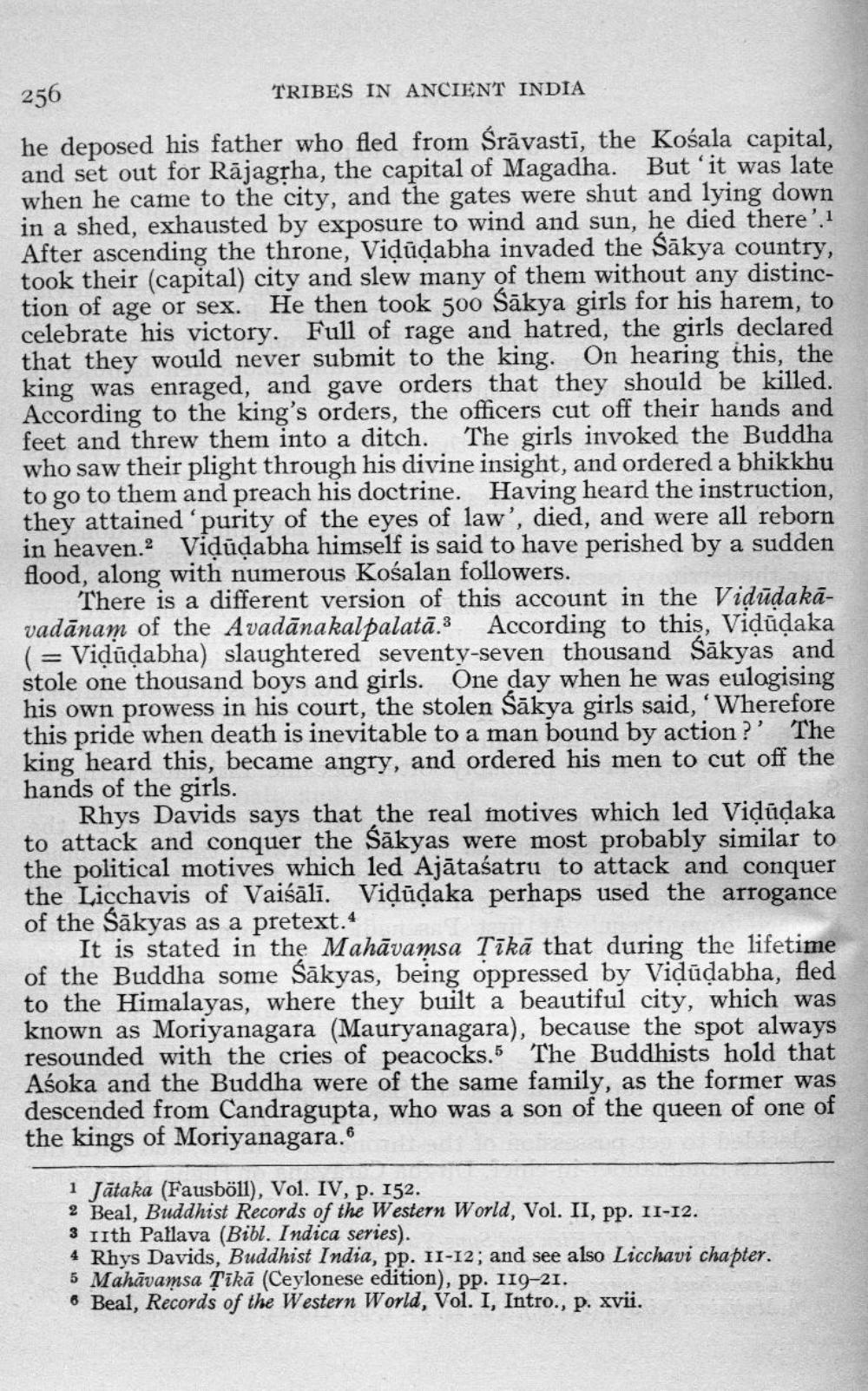________________
256
TRIBES IN ANCIENT INDIA he deposed his father who fled from Śrāvasti, the Košala capital, and set out for Rājagrha, the capital of Magadha. But it was late when he came to the city, and the gates were shut and lying down in a shed, exhausted by exposure to wind and sun, he died there'.1 After ascending the throne, Viļūdabha invaded the Sākya country, took their (capital) city and slew many of them without any distinction of age or sex. He then took 500 Śākya girls for his harem, to celebrate his victory. Full of rage and hatred, the girls declared that they would never submit to the king. On hearing this, the king was enraged, and gave orders that they should be killed. According to the king's orders, the officers cut off their hands and feet and threw them into a ditch. The girls invoked the Buddha who saw their plight through his divine insight, and ordered a bhikkhu to go to them and preach his doctrine. Having heard the instruction, they attained 'purity of the eyes of law', died, and were all reborn in heaven. Vidūņabha himself is said to have perished by a sudden flood, along with numerous Kośalan followers.
There is a different version of this account in the Vidūdakavadānam of the Avadānakalpalatā. According to this, Viļūdaka (= Viļūdabha) slaughtered seventy-seven thousand Sākyas and stole one thousand boys and girls. One day when he was eulogising his own prowess in his court, the stolen Sākya girls said, 'Wherefore this pride when death is inevitable to a man bound by action ?' The king heard this, became angry, and ordered his men to cut off the hands of the girls.
Rhys Davids says that the real motives which led Vidūďaka to attack and conquer the Sākyas were most probably similar to the political motives which led Ajātaśatru to attack and conquer the Licchavis of Vaiśāli. Viļūdaka perhaps used the arrogance of the Sākyas as a pretext.4
It is stated in the Mahāvamsa Tīkā that during the lifetime of the Buddha some sākyas, being oppressed by Vidūdabha, fled to the Himalayas, where they built a beautiful city, which was known as Moriyanagara (Mauryanagara), because the spot always resounded with the cries of peacocks.5" The Buddhists hold that Aśoka and the Buddha were of the same family, as the former was descended from Candragupta, who was a son of the queen of one of the kings of Moriyanagara..
1 Jặtaka (Fausböll), Vol. IV, p. I52. 2 Beal, Buddhist Records of the Western World, Vol. II, pp. II-I2. 3 IIth Pallava (Bibl. Indica series). 4 Rhys Davids, Buddhist India, pp. II-12; and see also Licchavi chapter. 5 Mahāvamsa Tīkā (Ceylonese edition), pp. 119-21.
Beal, Records of the Western World, Vol. I, Intro., p. xvii.




